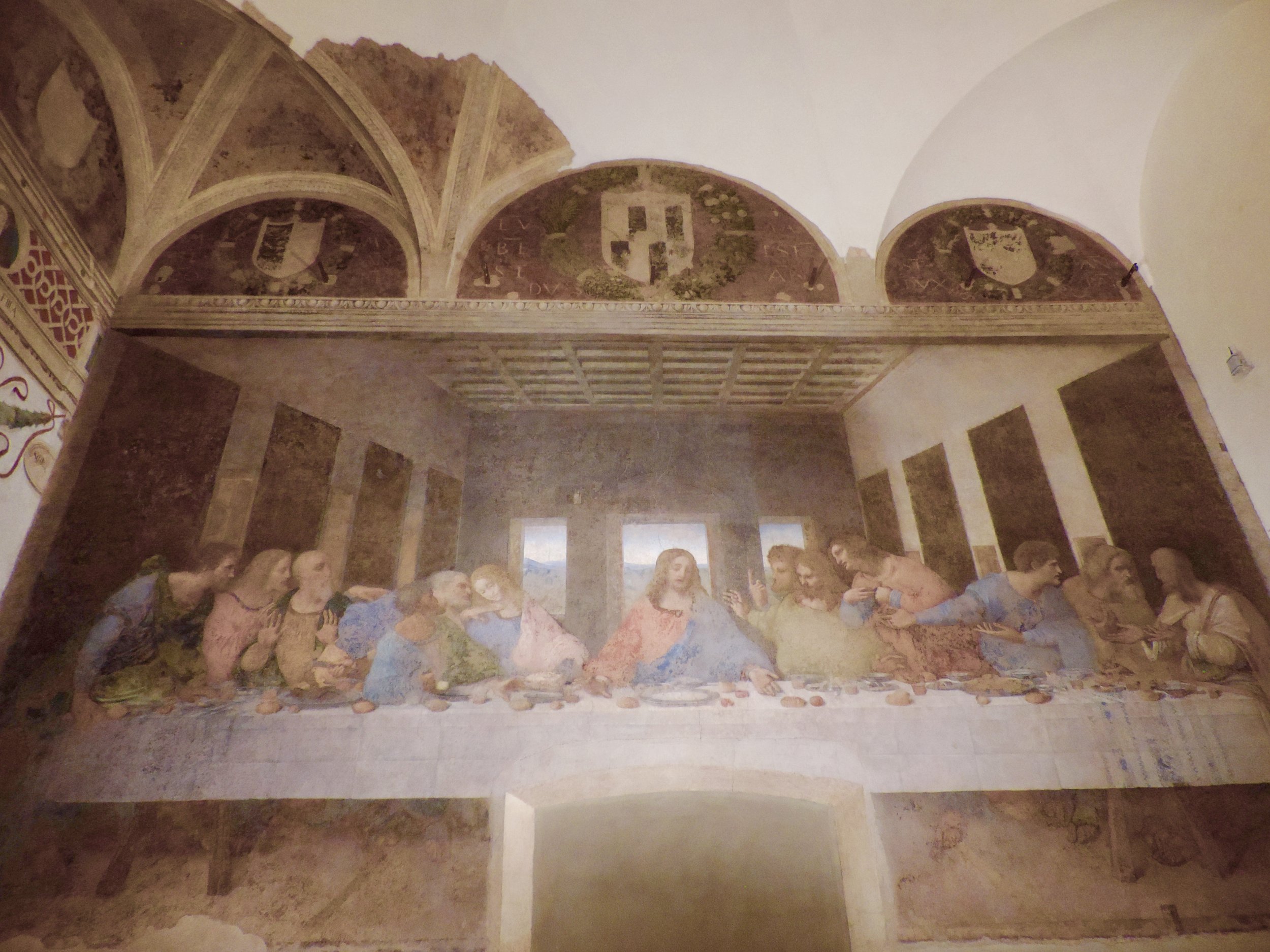Credits to: https://www.lonelyplanet.com/italy/the-italian-lakes/milan
Notes:
Many museums and churches are closed on Mondays, so check carefully when planning your itinerary.
Buy the 3 day transit pass per person from the ticket vending machine for 13 Euros per person.
Stop #1: Duomo di Milano
Resplendent in vision in pink Candoglia marble, Milan's extravagant Gothic cathedral, 600 years in the making, located right at the Duomo Metro station, aptly reflects the city's creativity and ambition. Its pearly white facade, adorned with 135 spires and 3400 statues, rises from the ground, wowing the crowds with its meticulous detail. The interior is no less impressive, punctuated by three enormous stained-glassed apse windows, while in the crypt saintly Carlo Borromeo is interred in a rock-crystal casket.
The most spectacular view is through the innumerable marble spires and pinnacles that decorate the rooftop. Crowning it all is a gilded copper statue of the Madonnina (Little Madonna), the city's traditional protector.
The cathedral can be seen by itself or with a €17 combined ticket that includes entry to the Duomo museum, the Chiesa di San Gottardo in Corte, the roof terraces and the baptistry, and is valid for 72 hours.
Stop #2: Galleria Vittorio Emanuele II
This is the world-famous department centre near the Duomo di Milano.
Stop #3: Pinacoteca di Brera
This gallery contains Milan’s collection of Old Masters, much of it ‘lifted’ from Venice by Napoleon. Rubens, Goya and Van Dyck all have a place, but you're here for the Italians: Titian, Tintoretto, Veronese and the Bellini brothers. Much of the work has tremendous emotional clout, most notably Mantegna's brutal Lamentation over the Dead Christ.
Highlights include the glass-walled restoration laboratory, where you can see conservators at work.
Stop #4: The Last Supper Museum
Important Note: Please book this at least 3 months in advance. Tickets sell out really quickly. The Museum is really strict in only allowing maximum 35 guests per 15 minutes.
Seeing this in person was truly an awe-inspiring experience. It is in a poor state of conservation as the wall painting was done with tempera, and has been steadily deteriorating since.
Book your tickets well in advance to the guided tour as they sell out quickly, and the timeslots are limited to 35 people maximum per 15 minutes to preserve the state of the paintings.
I also found the guided tour really informative.
Stop #5: Castello Sforzesco
Stop #5: Parc Sempione / Arco Della Place
Stop #6: Santuario di San Bernardino alle Ossa
In 1145, this place was a cemetery area where to bury the deceased of the nearby hospital. After a few years, the space available proved insufficient and then in the year 1210, at the bottom of the cemetery, it was built a room to gather the bones exhumed from the cemetery. A few years later, in 1268, was built a small church near the ossuary.
This was immediately rebuilt, but the charnel house was rebuilt from the ground up, and ended only in 1695, and is the one that still exists today. The confraternity of Disciplines took care to adorn the new ossuary: in the years 1694 Sebastiano Ricci painted the ceiling of ossuary. Above the only altar in marble with the emblems of the Passion of Jesus Christ is, in a special niche, a statue of Our Lady Dolorosa de Soledad (Santa Maria Addolorata), dressed in a white coat; the statue was made in the mid-eighteenth century during the Spanish domination.
The bones in the ossuary are from poor people died of natural causes in the old Brolo hospital; Priori and Brothers who ran the hospital. On the opposite side of the altar there are some skulls of people died violent deaths, or those beheaded because they were thieves, crooks and violent.
Some food suggestions:
Osteria da Fortunata
Caffe Napoli (a local favorite for great coffee - check out the specialty coffees)



































